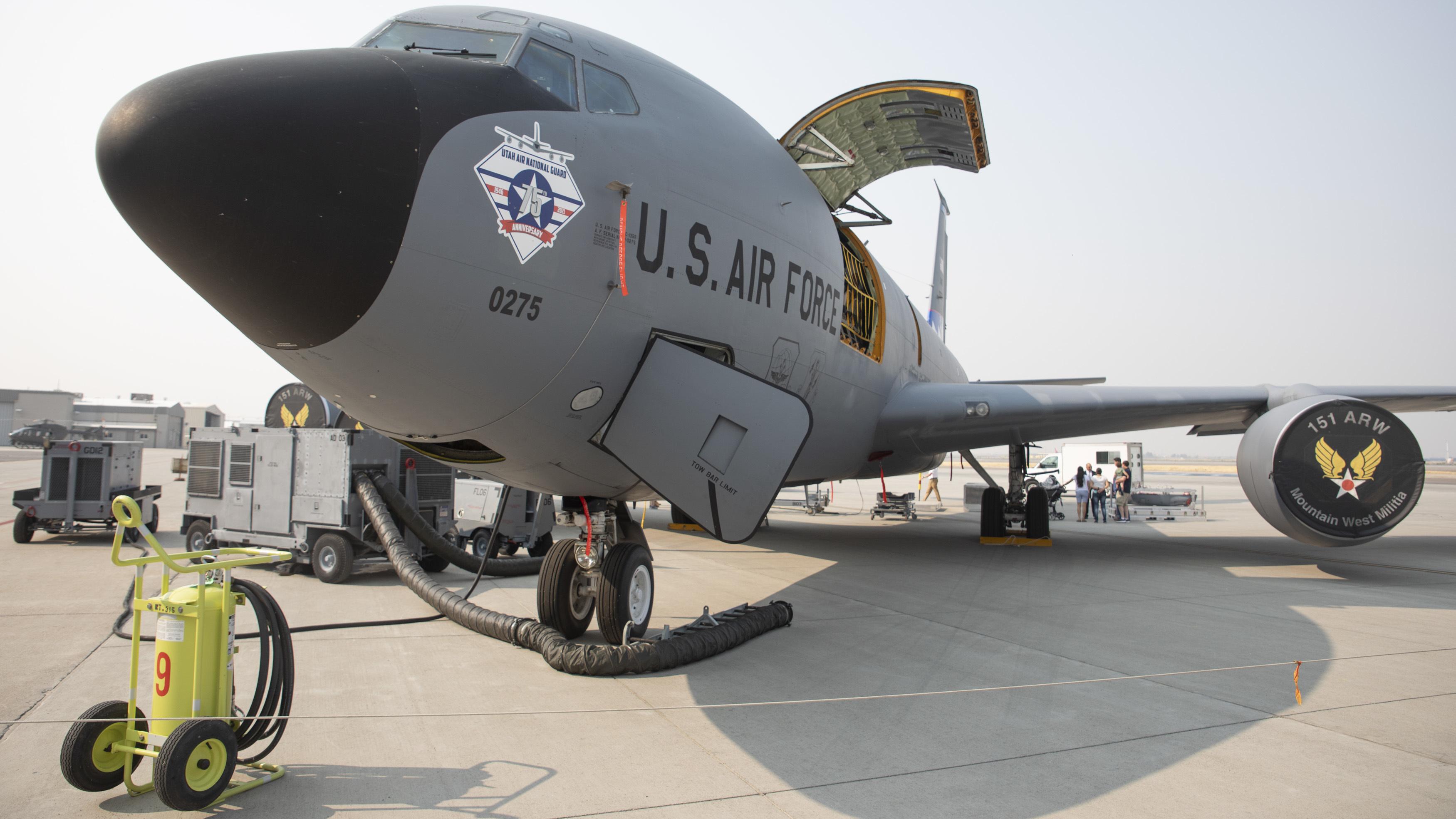AMC Wants To Launch 100 UAVs From Single KC-135 Stratotanker

A KC-135 with the Air Force’s main Stratotanker test unit.
The U.S. Air Force’s Air Mobility Command (AMC) wants a plan within two months to launch 100 UAVs from a single aging KC-135 Stratotanker.
The short-term goal was one of several efforts outlined by AMC Commander Gen. Mike Minihan in an internal memorandum to commanders that was posted to multiple social media networks and confirmed by Aviation Week on Jan. 27.
“This is an authentic internal memo from Gen. Minihan addressed to his subordinate command teams,” AMC says in a statement. “His order builds on last year’s foundational efforts by Air Mobility Command to ready the Mobility Air Forces for future conflict, should deterrence fail.”
The memorandum, the first of eight monthly orders from Minihan to commanders, outlines an aggressive timeline for the Air Force’s mobility fleet to be prepared for a possible conflict with China in 2025. Minihan has set a goal of August 2023 for having AMC prepared for that conflict, to coincide with a massive exercise planned to take place across the Indo-Pacific.
“We spent 2022 setting the foundation for victory,” Minihan wrote to his commanders. “We will spend 2023 in crisp operational motion building on that foundation.”
The document calls for commanders to identify new tactics aimed at operating inside the first island chain, including taking “calculated training risk” to maximize the current mobility fleet. This follows broader steps that AMC has taken under Minihan, such as freeing up the Boeing KC-46 for operations despite it still being years away from officially reaching initial operating capability.
“If the tactic, technique, and procedure you are developing increases AMC’s ability to fight and win inside the first island chain … move out,” the document says. “If you are comfortable in your approach to training, then you are not taking enough risk.”
Amid a group of personnel- and training-focused orders, Minihan calls on all KC-135 units to, by the end of March, coordinate “to provide a conceptual means of air delivering 100 off-the-shelf size and type UAVs from a single aircraft.” The order does not elaborate on the effort, which would likely require structural changes to an aerial refueler that has limited outside storage for potential launchers or common launch tubes to deploy the systems.
The Air Force has been experimenting with adding new capability to the KC-135 fleet, especially by the Air National Guard and Air Force Reserve Test Center-KC-135 Test Detachment of the Air National Guard in Utah. This unit has been testing new sensors and communication nodes to support the Air Force’s broad Advanced Battle Management System and satellite communication pods.
The memorandum includes a list of dozens of organization, training and equipment requirements for mobility aircraft and aircrews outlined in a fall 2022 planning conference called Phoenix Rally. These include:
—Under equipment, AMC will make progress on datalinks, digital situational awareness, threat defense, ballistic missile awareness, alternative navigation, command and control upgrades and palletized munitions. It notes that there has been progress on datalinks alternative navigation and palletized munitions. The last is the Air Force’s Rapid Dragon program, which includes a rack of cruise missiles on a launcher that can be air dropped from a C-130 or C-17.
—For training, AMC is requiring progress in areas that include specialized fuel operations, maximum aircraft generation, tactical datalinks, linked simulators, crew servicing and forklift training and palletized munitions. All areas except palletized munitions have had progress.
—Organizational requirements include a wide range of issues, including focus on operating with reduced crews, night vision, operating with no airfield markings, and minimum ground time, among several others. One was noted as complete: authorization to use so-called “Go-Pills,” such as dextroamphetamine, modafinil and dexedrine, to stimulate aircrews for extended missions.